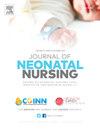评估护士在使用Skincubator 2.0时对安全性和便利性的看法。在人体模拟中,一种为早产儿提供长时间皮肤对皮肤护理的新型装置
Q2 Nursing
引用次数: 0
摘要
皮肤对皮肤护理(SSC)可以降低早产儿的发病率和死亡率。然而,对体温调节、气管内管(ETT)和导管移位的担忧是延长SSC的障碍。Skincubator™,一种可穿戴的孵化器,就是为了消除这些障碍而发明的。方法20名新生儿重症监护病房护士进行了模拟实验,包括转移一个连接机械通气和静脉注射(IV)或中心管的假人,以及在Skincubator内早产儿的护理程序的执行。对Skincubator护理和传统SSC的安全性、婴儿操作和护理便利性进行了Linkert量表(1 - 5,1非常不满意,5非常满意)。结果护士对Skincubator转移系统安全性的满意度为5(3.5,5,5)(中位数(四分位数范围)),对传统SSC转移系统安全性的满意度为3 (3,4)(p = 0.003)。护士们认为Skincubator减少了婴儿的操作,提高了方便性。结论护理人员认为皮肤培养箱提高了SSC的安全性和便捷性。本文章由计算机程序翻译,如有差异,请以英文原文为准。
Assessing nurses' perceptions of safety and convenience when using the Skincubator 2.0. a novel device for providing prolonged skin-to-skin care for preterm infants, in a manikin simulation
Background
Skin-to-skin care (SSC) reduces preterm infant morbidity and mortality. However, concerns regarding thermoregulation, endotracheal tube (ETT), and line dislodgement are barriers to prolonged SSC. The Skincubator™, a wearable incubator, was invented to mitigate these barriers.
Methods
Twenty NICU nurses performed a simulation involving transfer of a manikin connected to mechanical ventilation and Intravenous (IV) or central lines and performance of nursing procedures for preterm infants inside the Skincubator. Linkert scale (1–5, 1 very unsatisfied, 5 very satisfied) was filled for safety, baby handling, and nurse convenience for Skincubator care and traditional SSC.
Results
Nurses were very satisfied with the Skincubator transferring system safety (Likert scale 5 (3.5,5,5) (median (interquartile range) and neutral with traditional SSC transfer safety (3 (3,4) (p = 0.003). Nurses perceived that the Skincubator reduces baby handling and improves convenience.
Conclusions
Nurses perceived that the Skincubator improved safety and convenience during SSC.
求助全文
通过发布文献求助,成功后即可免费获取论文全文。
去求助
来源期刊

Journal of Neonatal Nursing
Nursing-Pediatrics
CiteScore
2.00
自引率
0.00%
发文量
143
期刊介绍:
Aims & Scope: This is the practical, bimonthly, research-based journal for all professionals concerned with the care of neonates and their families, both in hospital and the community. It aims to support the development of the essential practice, management, education and health promotion skills required by these professionals. The JNN will provide a forum for the exchange of ideas and information between the range of professionals working in this field; promote cooperation between these professionals; facilitate partnership care with families; provide information and informed opinion; promote innovation and change in the care of neonates and their families; and provide an education resource for this important rapidly developing field.
 求助内容:
求助内容: 应助结果提醒方式:
应助结果提醒方式:


